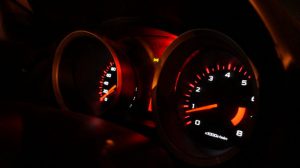My Check Engine Light Has Come On. Now What?
Whenever the Check Engine light goes off on your car, it means that there’s a problem you need to fix. The bad thing is you don’t have any idea what the issue is. It can be a failing timing belt, damaged clutch hose, or bigger engine complications.
Still, one thing’s for sure: you need a diagnostic repair scan. This scan will detect any issues on your car and skip the manual inspection that may take days.
If you’re wondering, the following are some of the reasons why the Check Engine Light comes on:
-The spark plugs are misfiring
This is the most common and easiest to fix among the problems that may trigger the Check Engine light. When the spark plug misfires, it will send a jolt to your vehicle. In some cases, it will cause freewheeling or a labored start.
You simply have to change the spark plugs and try starting your engine again. If the light turns off, then you’re good to go. If it persists, it’s best to head to an auto shop.
-The gas cap is loose
If you just fueled up and the Check Engine light comes on, it’s possible that you failed to close the gas cap properly. This will cause fuel vapors to emanate from your car, which your vehicle will detect as a faulty condition.
When the Check Engine light pops, pull over to the side and check your gas cap. Upon tightening the gas cap, the Check Engine light should turn off, unless there are other problems in your car.
-There are airflow sensor issues
When your vehicle’s airflow sensor fails, it will impact the fuel economy of your car as well as its mileage. The airflow sensor is responsible for signaling your car to release more gas into the fuel-air mixture.
When this fails, it will automatically turn the Check Engine light on. You need the help of a mechanic to diagnose and fix this issue.
-The oxygen sensor is malfunctioning
Over time, your oxygen sensor will be covered with oil ash, which will make it less efficient in reading. If this takes place, your car will likely tick the Check Engine light on. Take note that a faulty oxygen sensor will ruin your car’s fuel economy.
Moreover, if this problem is left unfixed, it will lead to more expensive vehicle problems. So once the light comes on, it’s best to bring your car to an auto shop.
-The catalytic converter is broken
The catalytic converter is an integral part of your engine. It’s responsible for converting harmful fumes into harmless gasses. Aside from the Check Engine lighting up, another sign of a failing catalytic converter is the failure of the car to accelerate even if you push the pedal.
Take note that the catalytic converter should be replaced by a professional. Once replaced, emission testing might be necessary to ensure that everything is working correctly.
Final words
Seeing the Check Engine light comes on is stressful. Still, it’s your car’s way of warning you of a potential problem before it becomes worse.

